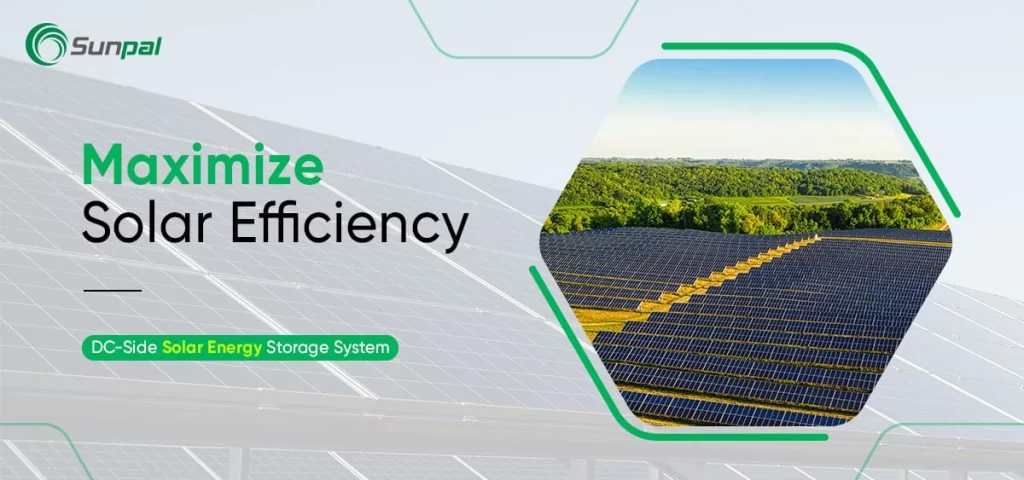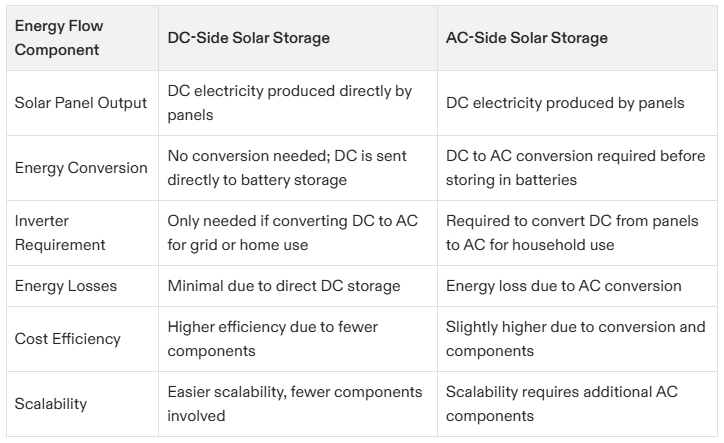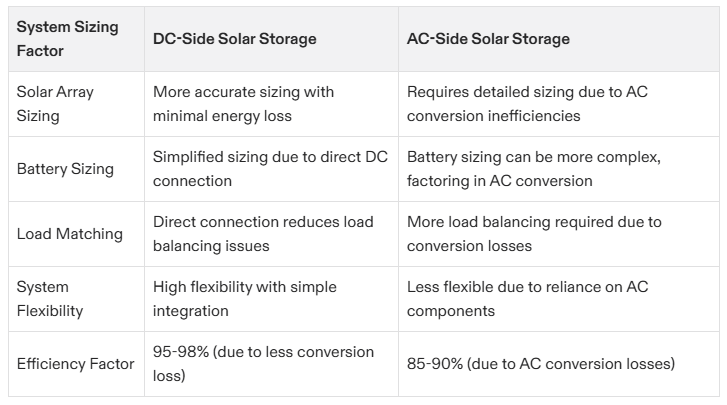
Introduction: The Underrated Role of DC-Side Integration in Solar Storage
When it comes to solar energy storage solutions, the spotlight is often on AC coupling. However, DC-side solar energy storage solutions are rapidly gaining traction in the solar industry, offering substantial benefits in terms of efficiency, scalability, and cost-effectiveness. Despite its advantages, DC-side integration is still underexplored by many solar companies, leaving a significant opportunity for those willing to dive into this innovative approach.
In this article, we'll explore how DC-side solar systems work, their benefits, challenges, and why they may be the future of energy storage solutions. If you're interested in upgrading your solar system or exploring energy independence, this hidden gem of solar storage may just be the solution you need.
What is DC-Side Solar Storage? Understanding the Basics
At the heart of solar power systems lies the need to manage the energy generated. Most solar installations rely on AC coupling for energy conversion and storage. However, DC-side integration offers an alternative that could change the way we think about solar energy systems.
DC-Side vs AC-Side Integration
- DC-side systems connect solar panels directly to the battery storage without the need for an AC inverter, resulting in fewer energy conversions.
- AC-side systems, on the other hand, convert the DC power generated by solar panels into AC power, then store it in batteries.
In simpler terms, DC-side solar energy storage integrates the solar panel, battery, and charge controller in a direct connection. This minimizes energy losses that occur during the DC-to-AC conversion process, making the system more efficient.
Table 1: Energy Flow Comparison – DC-Side vs AC-Side Solar Storage

Advantages of DC-Side Solar Energy Storage Solutions
1. Higher Efficiency
The primary advantage of DC-side solar systems is their higher efficiency. When energy is converted from DC to AC and then back again, there is a loss in energy, known as conversion loss. DC-side systems avoid this by storing and utilizing power directly from the solar panels in DC format, significantly reducing energy loss.
2. Cost Savings
DC-side systems are simpler and require fewer components than their AC counterparts, which leads to reduced installation and maintenance costs. Fewer components also mean there is less chance of failure, providing long-term savings.
3. Scalable and Flexible
Whether you’re designing a small residential system or a large commercial solar installation, DC-side systems offer unmatched flexibility. The scalability of DC systems allows for simple upgrades without the need to overhaul your entire setup. As your energy needs grow, adding additional solar panels or batteries is straightforward.
4. Simplified System Design
Because DC-side systems involve fewer components and processes, they tend to have a simpler and more reliable design. The reduction in complexity also results in less maintenance and troubleshooting, making them a more attractive option for long-term reliability.
Table 2: Cost Comparison – DC-Side vs AC-Side Solar Systems

DC-Side Integration: How It Works in Practice
The practical implementation of DC-side solar energy storage solutions begins with the installation of solar panels. The solar panels generate DC electricity, which is then sent directly to the battery storage. The system is controlled by a charge controller that manages the battery charging and discharging cycles.
Here’s a simplified process to implement a DC-side solar energy storage solution:
- Install Solar Panels: Set up solar panels to generate DC electricity.
- Integrate Charge Controller: Use a charge controller to regulate the power flow from solar panels to batteries.
- Store in Batteries: DC electricity is stored directly in the batteries for later use, avoiding conversion losses.
- Use or Convert Power as Needed: If needed, DC-to-AC inverters can be used to convert stored power to AC for household appliances or return to the grid.
This process allows you to make the most of the solar energy generated, minimizing losses and improving overall system performance.
Challenges and Considerations of DC-Side Solar Storage
Despite its advantages, DC-side solar storage is not without its challenges.
1. Limited Adoption in the Market
While DC-side integration is gaining momentum, AC-coupled systems are still more widely adopted in the industry. One reason for this is that AC systems have been the traditional standard, with manufacturers and installers familiar with them. The push towards DC-side integration has been slower, though its efficiency benefits are becoming more apparent.
2. Technical Barriers
One of the primary technical challenges with DC-side integration lies in ensuring compatibility between different solar components. For example, not all batteries are designed for direct DC charging, and finding components that are fully compatible can require extra effort and attention to detail.
3. System Sizing
Sizing the system correctly for DC-side solar storage is critical. Incorrect sizing can lead to either underutilization of resources or excessive energy losses. Properly balancing the solar array and battery capacity is essential to maximizing system efficiency.
Table 3: System Sizing Comparison – DC-Side vs AC-Side Solar Storage

The Future of DC-Side Solar Storage: Trends and Innovations
Technological Advancements
As technology advances, so too do DC-side solar systems. Future innovations may focus on more efficient batteries, enhanced charge controllers, and improved DC-to-DC inverters for even greater performance. Additionally, the integration of smart grids will allow for even more advanced control and optimization of DC-side systems.
Increasing Adoption
With the growing emphasis on sustainability and energy independence, more homeowners, businesses, and solar companies are looking to adopt DC-side solar storage solutions. As awareness increases and technology improves, we expect to see more installations leveraging the benefits of direct DC coupling.
Table 4: DC-Side System Efficiency – Energy Conversion Losses

Conclusion: Unlocking the Full Potential of Solar Storage with DC-Side Integration
The world of solar energy storage is changing, and DC-side solar energy storage solutions are at the forefront of this transformation. By offering higher efficiency, cost savings, and scalability, DC-side systems are poised to become the preferred option for solar installations in the coming years.
If you’re looking to optimize your solar energy system and take advantage of the latest innovations, DC-side integration could be the way to go. Not only does it reduce conversion losses, but it also simplifies the design and operation of solar energy systems, making them more cost-effective and reliable.
At Sunpal Energy, we are committed to providing innovative and reliable solar energy solutions that meet your unique needs. Whether you're looking to implement a DC-side solar storage system or explore other cutting-edge technologies, our team of experts is here to guide you every step of the way. With a focus on efficiency, cost-effectiveness, and sustainability, we ensure that your solar investment delivers maximum value. Let Sunpal Energy help you unlock the full potential of solar power and take control of your energy future.
